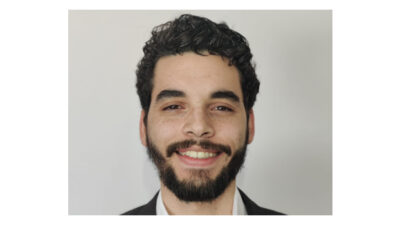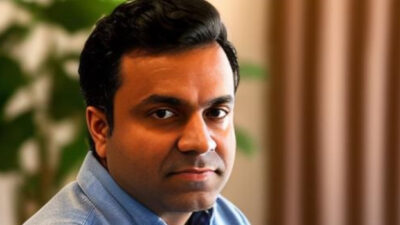Placing a thermocouple inside a furnace seems like an obvious way to measure the temperature of the product being heat-treated. However, some care must be exercised in determining not only what sensor to use, but exactly where to place it. Even a highly accurate resistance temperature detector (RTD) tucked in the corner of the furnace will only be able to detect the temperature of its immediate...
AT A GLANCE
Sensor placement questions to ask
Noise consequences
Distance to data
Ultrasonic sensors
Sidebars: Five basic questions to ask when placing sensors
Placing a thermocouple inside a furnace seems like an obvious way to measure the temperature of the product being heat-treated. However, some care must be exercised in determining not only what sensor to use, but exactly where to place it.
Even a highly accurate resistance temperature detector (RTD) tucked in the corner of the furnace will only be able to detect the temperature of its immediate vicinity. If the heat distribution within the furnace is uneven, that local temperature may or may not represent the temperature of the products sitting in the middle of the furnace.
That’s a classic mistake that home heating contractors often make when installing household thermostats. A mounting location closest to the central air conditioner may be convenient for wiring purposes, but if that spot happens to be in a hallway or other dead air space, the thermostat will not be able to determine the average temperature elsewhere in the house. It will only be able to maintain the desired temperature in its immediate vicinity. The rest of the house may end up roasting or freezing.
To avoid such pitfalls, an instrumentation engineer must select locations for her sensors by considering where (and if) the required data is actually present. That is arguably the most obvious placement issue, but there are others that may also affect the sensor’s performance in more subtle ways. These include noise, distance to data, and factors peculiar to ultrasonic sensors.
Measurement noise
Having too much data at the proposed sensor location can also be a problem, especially when electrical ground loops, mechanical vibrations, radio frequency interference (RFI), and other environmental factors cause measurement noise. RFI noise is especially common in plants that use walkie-talkies, pagers, and wireless networks and in applications where electromechanical contacts generate sparks.
For example, certain kinds of proximity sensors can generate false positive signals when a nearby relay flips. A simple fix would be to relocate susceptible proximity sensors away from switch boxes and relays, or vice versa. If that’s not possible, then some of the plant’s electromechanical equipment may have to be shielded or replaced with solid-state devices to eliminate the source of arc-generated RFI.
In flow measurement applications, one common source of measurement noise is turbulence resulting from bends, junctions, and valves in a pipe. Turbulence is especially challenging for magnetic flowmeters. The simple fix is to place all magmeters in sections of straight pipe or use alternative flow-measuring technology such as vortex flow meters that can be calibrated to handle turbulent flows.
Ignoring a severe noise problem—especially RFI noise caused by the current in an ac supply line—is generally not an option. At 60 Hz, ac current oscillates slowly enough to have an appreciable effect on some processes.
For example, consider the process of flattening hot steel into uniform sheets by means of two opposing rollers, as shown in the “Thickness Gauge” example. A thickness gauge downstream from the rollers measures the sheet and causes a feedback controller to apply either more or less pressure to compensate for any out-of-spec thickness.
A 60 Hz, noise superimposed on the output of the thickness gauge will pass through the controller and induce a 60 Hz oscillation in the roller pressure. If the sheet exits the rollers with a velocity of six feet per second, those oscillations will appear as bumps in the sheet appearing every tenth of an inch.
Whether those flaws are appreciable or not will depend on the amplitude of the original noise signal, the inertia of the rollers, and the tuning of the controller. In any event, it would be prudent to locate the thickness gauge away from all ac supply lines if at all possible.
Distance to data
The thickness gauge example also illustrates what can happen when a sensor is placed too far away from the source of the data. Ideally, the thickness gauge should be located adjacent to the rollers to minimize the time between a change in roller pressure and the resulting change in the thickness measurement. Otherwise, the controller will not be able to detect any mistakes it may have been making soon enough to prevent even more of the sheet from turning out too thick or too thin.
Worse still, if the thickness gauge is located so far downstream that the thickness data takes more than a moment to reach the gauge, the controller can become impatient. Seeing no results from an initial control move, the controller will make another and another until some change begins to appear in the measurements reported by the sensor.
By that time, the controller’s cumulative efforts will have already overcompensated for the original error, causing an error in the opposite direction. The result will be a constant series of up and down swings in the roller pressure—and a lot of steel ruined by lateral corrugations.
Ultrasonic examples
Distance can also be an issue when placing ultrasonic proximity sensors. These work by bouncing a pulse of sound waves off the object to be detected. The time required for the pulse to reach the object and return to the sensor indicates the distance between them, but only if the speed of the pulses is known and the object is not so far away that the returning pulse becomes too faint to detect.
The latter problem is particularly acute when the object is so small that only a fraction of the sound waves striking it get reflected. The smaller the object, the closer an ultrasonic proximity sensor must be to detect it.
Fortunately, halving the distance between the sensor and the object quadruples the strength of the returning waves, so even a modest decrease in the separation between the two can greatly improve the sensor’s chances of successfully detecting the object.
Determining the speed of the ultrasonic pulses can also be a problem when the object is so far away from the sensor that appreciable variations occur in the temperature of the intervening air. The sensor can measure the temperature of the nearby air mass to determine how fast sound will pass through it, but the sensor cannot account for changes in the speed of the ultrasonic pulses as they pass through distant masses of air with different temperatures. It can only assume that all of the intervening air is at the same temperature.
So if in fact the temperature of the air varies along the path of the pulse, the sensor will miscalculate the total distance that the pulse has traveled and misidentify the object’s position. The same problem afflicts ultrasonic level sensors that are placed too far above the surface of the liquid in a tank. See the “Temperature gradient” graphic.
Ultrasonic proximity sensors can also have trouble detecting objects that are too close. Consider the situation depicted in the “Secondary echo” graphic. In this example, the distance between the bottom sensor and the bottom object is exactly half the distance between the top sensor and the top object. The time required for an ultrasonic pulse to traverse the shorter distance should be exactly half that of the longer distance, and the lower sensor should be able to detect that the lower object is only half as far away.
However, if the separation between the bottom sensor and the bottom object is too small, the sound waves bouncing off the bottom object may also bounce off the bottom sensor and make a second round trip. The total time required for that secondary echo to return to the sensor a second time would be exactly the same in the top case. As a result, the bottom sensor will “see” two objects—the real thing and a ghost object twice as far away.
For more sensor- and application-specific information, visit specific sensor vendor sites. Find them at www.cesuppliersearch.com.
Five basic questions to ask when placing sensors
Is there any useful information available at the sensor’s proposed location? Incomplete mixing in a tank, shadows on objects being scanned optically, and obstructions between the sensor and the data source can severely reduce the intensity and accuracy of the data being collected.
Is there any extraneous information there? Unwanted data sources such as radio frequency interference can add so much noise to the desired data that the sensor’s measurements become useless.
Can the sensor actually get a reading there? Extreme conditions at some locations such as turbulence, excessive vibrations, or high temperatures can defeat or completely disable some sensors.
Is the information coming from that spot actually the information that is desired? Poor placement can cause a sensor to register auditory echoes and optical reflections as ghost data.
Can the data be collected quickly enough from that spot to do any good? Data that takes too long to collect can give an outdated impression of the current conditions.



